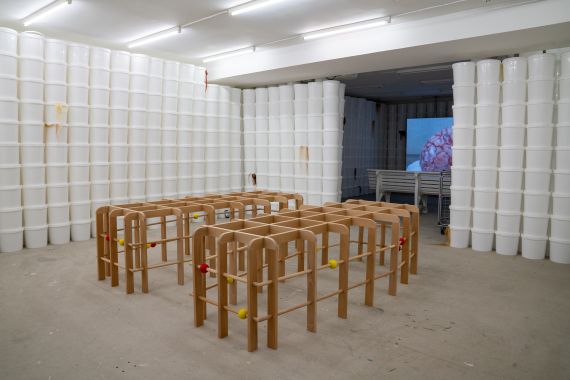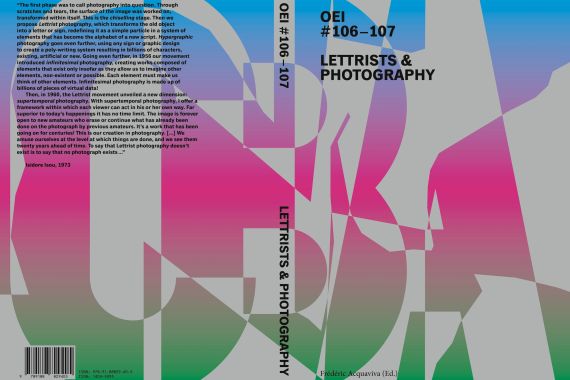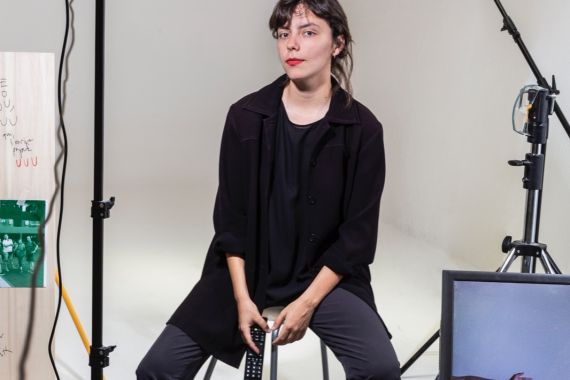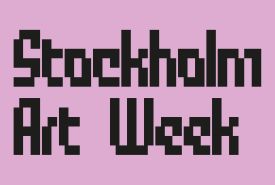In the beginning of April, Index opened a new exhibition, Madeleine Andersson: SHOCK VALUE.
In the exhibition Andersson investigates, among other things, the paradox of the “scientific method”, where on the one side science must be constantly questioned whereas on the other it must be considered fact. Andersson’s multimedia installation questions science inherent fixation on progression and results, and instead explores its experimental, absurd, stupid and almost artistic nature.
The exhibition remains open until 24 August.
More
| Index | ||


Welcome to Index for the release of OEI #106-107: Lettrists & Photography with Frédéric Acquaviva, Jonas (J) Magnusson and Cecilia Grönberg.
OEI #106–107: Lettrists & Photography is, which is indeed a remarkable fact, the first large-scale synthesis of Lettrist photography as a precise ‘system’. And not least given the often stunning – visual and conceptual – intensity of many of these innovative works, which haven’t lost their relevance and still haven’t received the attention they would merit. OEI #106–107: Lettrists & Photography presents the universe of the Lettrist movement’s engagement with photography from the 1950s up until 2013. It reproduces around 430 photographic works and documents, and also includes English translations of texts by and interviews with Isidore Isou, Maurice Lemaître and Frédérique Devaux. More

Some questions for our current researcher at Index, Mar Reykjavik.
Explain a little bit the starting point of your research? The research project I am currently working on originates in a writing and translation practice that is alternative to the official: affective translation. Affective translation is a language operation in which we replace the effective dimension of translation with an affective one. It is an exercise that attends to the singularity of the person translating and of the languages involved—one that subverts the logics of linguistic domination and power, and that reconsiders the ownership of words. This project is part of an ongoing investigation into affective translation—a concept I have developed through works such as A gap between two adjacent teeth / Una font que raja for the exhibition Scene I. Making Landscape (IVAM, 2024), Va el buzo, babbling (Editorial Tejido Ajado, 2024), el texto será la imagen aguantando (Tabakalera, 2024), Leyendo / Legeak egitea (Emedeene, 2024), and the production of To the wind, an essay on translation and censorship filmed at Riksmixningsverket, Stockholm, 2025. How are you planning your time for the research here in Stockholm? My time in Stockholm includes writing a script, rehearsals, video documentation, and its subsequent editing. Relocating to carry out this process allows me to live in a context where the language spoken is one I do not understand. This unfamiliarity introduces an abstract condition to my practice, helping me understand the loss of code and the vulnerability of not knowing the language as a form of linguistic abstraction—one that forces me to take a position. At the moment, I am writing a script for three or four voices and for three or four cameras. The rehearsals of this script will be recorded. These recordings will highlight variations generated by the conditions, singularities, mistakes, and mistranslations of the performers. The notion of rehearsal is a continuous thread in my work: rehearsal understood as a space for testing. The scripts function like scores that enable the performers to generate situations in which their micropolitics and minor gestures are exposed. We will film in Stockholm the material for a video installation that will make explicit certain language operations: affective translations between English, Catalan, Swedish, and other languages; exercises in encryption, doubling, and folding of personal codes and idioms as a way to escape (self-)censorship and the processes of linguistic and identity-based minoritization and invisibilization. Index would like to thank Fundación Botín and their Art grants program for the support to Mar Reykjavik’s research. More |

